17 Interesting & Fun Facts About Woodpeckers You Never Knew
Last Updated on
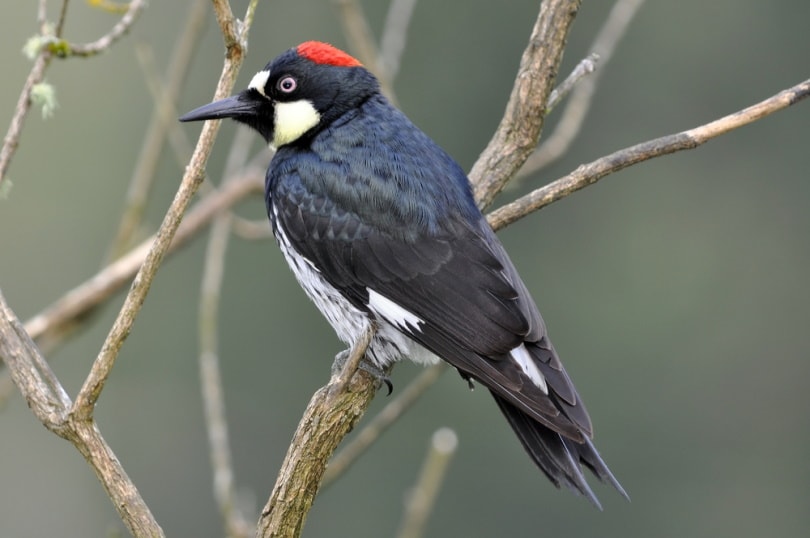
Woodpeckers can be found all throughout the United States. They’re most known for their drumming and leaving behind holes in wood. Although some may create loud noises and can even drill against homes and buildings, they shouldn’t primarily be seen as pests.
While most species are a common sight to see, woodpeckers are special birds that play an important role in their ecosystems. The following facts will show just how amazing these birds are.

The 17 Facts About Woodpeckers
1. There Are Over 300 Species of Woodpeckers Worldwide
Woodpeckers belong to the large Picidae family, and you can find them living in all parts of the world except for Australia and New Guinea. South America and Southeast Asia have the greatest abundance of Woodpecker species.
The US is home to 22 unique species. Most species are residents of the states, while a couple of them, such as the Yellow-Bellied Sapsucker, are migratory and make cross-continental journeys.
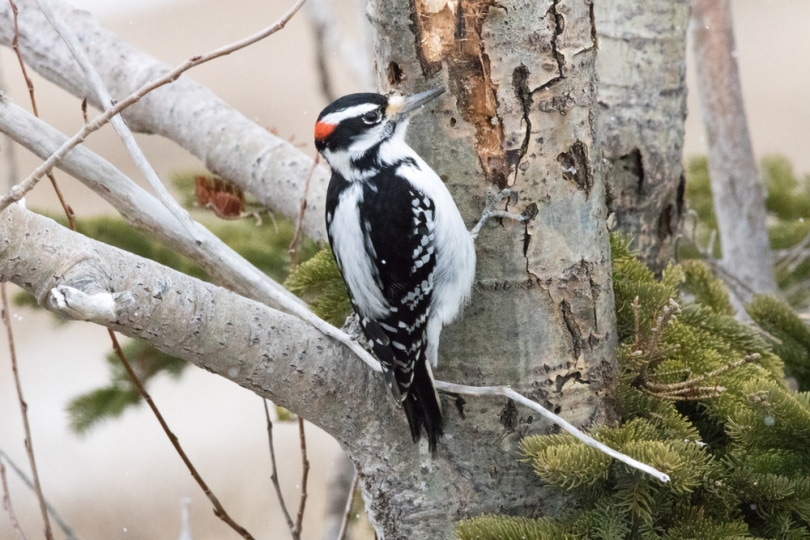
2. 18 Species Are Endangered or Near Extinction
The International Union for Conservation of Nature has recorded 40 woodpecker species to be near threatened, vulnerable, endangered, or critically endangered. The most prominent cause of decreasing woodpeckers is habitat destruction.
The following woodpeckers are endangered or critically endangered:
- Fernandina’s Flicker
- Imperial Woodpecker
- Ivory-Billed Woodpecker
- Okinawa Woodpecker
- Red-Headed Flameback
- Speckle-Chested Piculet
- Varzea Piculet
- White-Rumped Woodpecker
- Yellow-Faced Flameback
The Bermuda Flicker was most recently assessed in 2016 and was documented as extinct in 2017.
3. They Have Interesting Feet
Woodpeckers have a special set of feet called zygodactyl feet, also known as yoke-toed feet. Zygodactyl feet have two toes situated in the front and two toes situated in the back.
These sets make it easier for woodpeckers to grip onto tree bark more easily than other birds. Cuckoos and parrots also have zygodactyl feet.

4. They Have Particularly Strong Tail Feathers
Woodpeckers have tails that help them stay anchored vertically to trees. These tails are particularly stiff, so woodpeckers can lean and rely on them to support their body weight. All woodpecker species have these stiff tails, except for piculets and wrynecks.
5. They Don’t Get Headaches
Woodpeckers can hit their head against trees about 20 times a second. However, this repeated thumping doesn’t do damage to their heads because of how they’re specially designed to absorb impact.
Woodpeckers have particularly strong necks to support their heads, and their skulls also have extra muscles that cushion and protect their brains. They essentially have a built-in helmet to prevent injury as they rap against hard tree bark repeatedly.
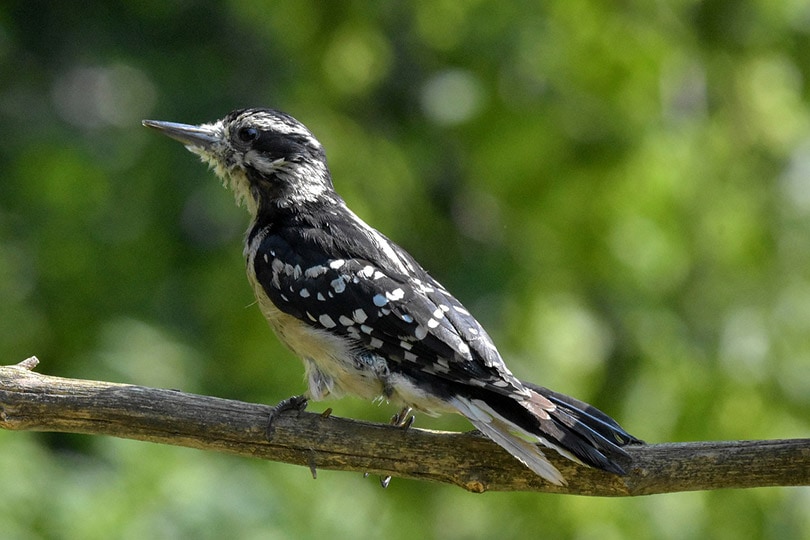
6. Their Beaks Don’t Wear Out
While woodpeckers have heavily padded skulls, their beaks are actually their first line of defense against injury as they hammer into trees. Woodpecker beaks have a regenerative feature where they can repair small splits and cracks, similar to how our nails regrow throughout our lifetime.
The beaks also act as shock absorbers because they’re slightly flexible and also have a foam-like inner layer. They’re designed to distribute the force of impact so that they don’t receive as much damage.
7. They Have Hair That Covers Their Noses
As an extra measure of protection, woodpeckers also have hair-like feathers near their nostrils. These feathers protect and prevent them from inhaling any sort of sawdust and small debris as they drill through trees.
As if all this protection isn’t enough, woodpeckers also use their inner eyelid, the nictitating membrane, to shield their eyes. This membrane is see-through and works like a pair of goggles that deflect any flying wood chips.
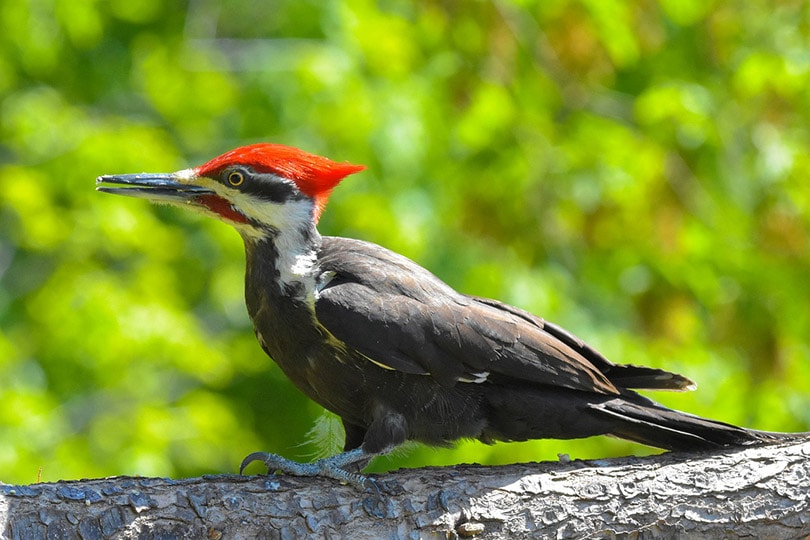
8. They Like Dead Trees
While dead trees and branches may look unsightly, they’re actually full of life. Many insects like to hide in the crevices of these decaying trees, making them the perfect feeding ground for woodpeckers.
Along with snacking on insects, woodpeckers like to use dead trees to store their food. They’ll drill holes and place acorns and other seeds and nuts inside them for later use.
9. They Have Really Long Tongues
Woodpeckers have extremely long tongues in comparison to their bodies. The Green Woodpecker has a tongue so long that it wraps around its skull. The tongue is a third of the bird’s body length and coils behind the skull, goes over the eyes, and through the right nostril.
Woodpeckers use their tongues similarly to anteaters and pangolins. Since many species of woodpeckers are insectivores, they use their long tongues to excavate and scoop up ants and other small insects.

10. The Largest Woodpecker in North America Is the Pileated Woodpecker
The Pileated Woodpecker can grow up to 16-19 inches in length, which is similar to the length of a crow. Along with their large size, they’re known for their entirely red crest.
You can find Pileated Woodpeckers in some parts of the Pacific Northwest, northern California, and the eastern half of the US. They prefer living in coniferous and mature deciduous forests.
The famous Woody the Woodpecker was inspired by the Pileated Woodpecker.
11. The Smallest Woodpecker in North America Is the Downy Woodpecker
Downy Woodpeckers share similar features with most woodpeckers. They have some red feathers on their crowns and have streaks of black and white feathers. Their bills are on the shorter side, but they’re still effective drillers.
Because of their small size, they’re more agile than bigger woodpecker species and are very nimble when it comes to maneuvering around trees. Despite being compact, Downy Woodpeckers can actually be quite loud and are especially noisy in the spring and summer.

12. Woodpeckers Don’t Peck at Night
Fortunately, Woodpeckers are diurnal, so they’re most active during the day. They’re polite neighbors that will roost and go into their nests at nightfall. So, you don’t have to deal with their loud drumming while you’re trying to fall asleep.
13. Sapsuckers Don’t Actually Suck Up Sap
Sapsuckers are a type of woodpecker that like to peck holes into trees that produce excessive amounts of sap. Despite their name, they don’t actually suck up the sap. Instead, they lick it up with their long tongues.
This type of woodpecker is also known for being neat and organized with its drilling. You’ll know if you have a sapsucker in your vicinity if you can see a trail of neatly lined up rows of holes on trees.
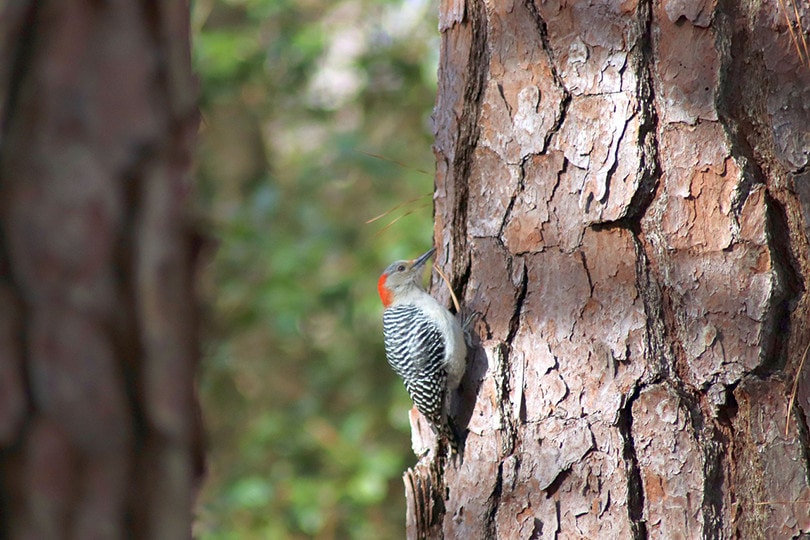
14. Some Woodpeckers Can Store Insects
While woodpeckers are known for stuffing acorns in the holes they’ve drilled, they can store insects in these holes as well. Woodpeckers are experts at finding holes made by bugs and drilling at them until they can reach them.
Red-Headed Woodpeckers are known to trap live insects, such as grasshoppers, in tight inescapable cracks in trees. They’re also territorial and can act aggressively toward other woodpeckers and birds to protect their territory.
15. They Can’t Sing Very Well
While the woodpecker has many talents, singing isn’t one of them. They can make loud caws and calls, but they’re not pleasant, like songbirds.
However, woodpeckers are extraordinary drummers and can drum against trees and other objects about 8,000 times a day. Sometimes, woodpeckers try to be as loud as possible to attract mates and can even rap their beaks against metal drainage pipes. It’s a good thing they’re diurnal so that we aren’t kept up at night from all the noise they can create.

16. They Have Great Hearing
Woodpeckers have a powerful set of ears that help them hunt for insects. They can hear the sounds that insects make as they travel underneath the bark of deadwood. Woodpeckers can even detect and pinpoint the sound of insects chewing. Then, they’ll expertly peck away to break through the wood to excavate these hidden insects.
17. Most Woodpeckers Are Monogamous
Some species of birds are monogamous, including some types of woodpeckers. These woodpeckers tend to be very paternal and will work together to raise generations of offspring together.
Woodpeckers find mates by attracting them through drumming. Drumming also sets parameters for a male woodpecker’s territory, which can be attractive to female woodpeckers.
Conclusion
Woodpeckers are talented birds that can help control insect populations. Their expertise in drilling holes also provides nests and homes for other birds and animals. They play a crucial role in helping the health of their ecosystems. So, the next time you hear a woodpecker tapping in the distance, make sure to take some time to appreciate all they do for the environment.
You might Interested:
- Interesting and Fun Northern Cardinal Facts
- Interesting and Fun Mockingbird Facts
- Interesting and Fun Cooper’s Hawk Facts
Featured Image Credit: Laura Mountainspring, Shutterstock
Table of Contents
- The 17 Facts About Woodpeckers
- 1. There Are Over 300 Species of Woodpeckers Worldwide
- 2. 18 Species Are Endangered or Near Extinction
- 3. They Have Interesting Feet
- 4. They Have Particularly Strong Tail Feathers
- 5. They Don’t Get Headaches
- 6. Their Beaks Don’t Wear Out
- 7. They Have Hair That Covers Their Noses
- 8. They Like Dead Trees
- 9. They Have Really Long Tongues
- 10. The Largest Woodpecker in North America Is the Pileated Woodpecker
- 11. The Smallest Woodpecker in North America Is the Downy Woodpecker
- 12. Woodpeckers Don’t Peck at Night
- 13. Sapsuckers Don’t Actually Suck Up Sap
- 14. Some Woodpeckers Can Store Insects
- 15. They Can’t Sing Very Well
- 16. They Have Great Hearing
- 17. Most Woodpeckers Are Monogamous
- Conclusion
About the Author Jessica Kim
Jessica is a freelance writer who spends most of her day researching and writing a number of topics. She loves sharing helpful information that people can use to better understand their pets, nature and the world around them. When she isn't writing, you may find her walking dogs, tending to her plant babies, or drinking her nth cup of coffee.
Related Articles:
10 Types of Hummingbirds in Arkansas (With Pictures)
8 Types of Hummingbirds in Nebraska (With Pictures)
5 Types of Hummingbirds in Idaho (With Pictures)
3 Types of Hummingbirds in Mississippi (With Pictures)
8 Types of Hummingbirds in Kansas (With Pictures)
5 Types of Hummingbirds in West Virginia (With Pictures)
5 Types of Hummingbirds in Ohio (With Pictures)
Where Do Nuthatches Nest? Nuthatch Nesting Habits Explained
